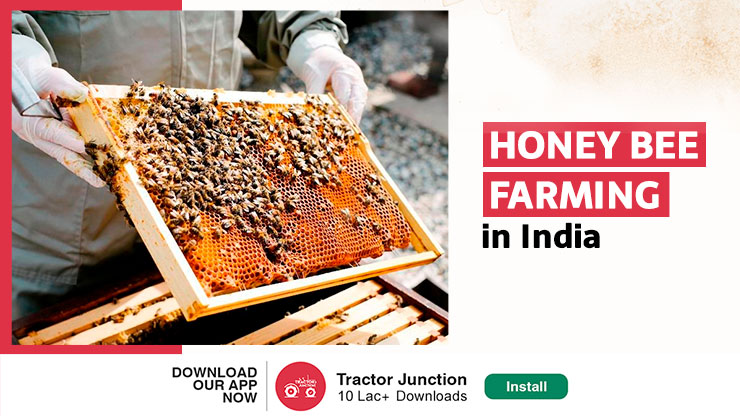
How to start honey bee farming?
Honey Bee Farming in India, it may not have been a long time since it started commercially, but collecting honey from the forests has been in existence since ancient times. Honey bees convert the juice of flowers into honey and store that honey in the hive.
The rising demand for honey in the market indicates that beekeeping in India can emerge as a profitable enterprise at present. Let’s talk about the products produced from beekeeping in India. Honey and honey wax are two significant products produced from it. Any farmer can start this agro-based business to get extra income. This business is a traditional occupation to make honey.
As far as honey is concerned, its demand is growing continuously in the national and international markets due to its many industrial and domestic uses. By starting this business, farmers are earning money and the farming productivity increases due to pollination. Most of the ordinary or traditional agriculture has been done in our country India. After experiencing continuous losses in them, the farmers have shifted towards the Beekeeping business.
That too because beekeeping can be used as an essential input means for maximising agricultural production. According to one data, 80% of crop plants need to receive pollen from other plants of the same species with the help of outside agents, and bees quickly do this task. So let’s move to know more honey bee farming information.
Types of Honey Bee
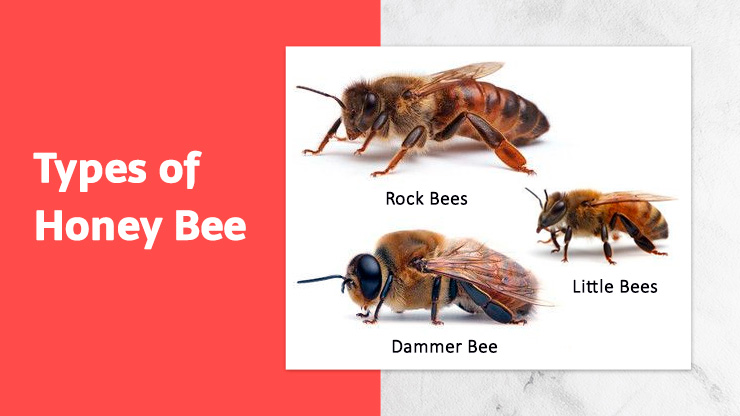
Typically a beehive consists of a queen, hundreds of drones and thousands of worker bees, so a settlement can have 3 species or more. In this, the queen bee is a fertile bee that can give birth. And drone bees are male, while worker bees are sterilised bees that can’t give birth. The following are some of the notable species of bees.
- Indian Hive Bees (Apis Cerana Indica)
- Rock Bees (Apis Dorsata)
- Little Bees (Apis Florea)
- European and Italian Bees (Apis Mellifera)
- Dammer Bee or Stingless Bee (Tetragonula Iridipennis)
Tips for Beekeeping Business
A farmer starting honey bee cultivation needs to keep some things in mind before starting this business. That is to say, the entrepreneur or farmer may need to take some essential steps before starting this business, which is as follows.
- In the area where you want to begin this business, get involved with bees and learn about them practically. Take good honey bee farming training.
- Suppose the farmer or entrepreneur has no prior experience working with bees. In that case, they should work with local entrepreneurs or farmers to get all the honey bee farming process information.
- After this, the entrepreneur should make an effective plan for using the equipment and selling the products.
- While making a bee farming business plan, set realistic goals only and start from a small level in the beginning phase; when you gain some experience in the honey business in India, you can also think about big projects.
- However, what equipment can be used and what species of bees should be reared in this project depends on the local situation.
- Entrepreneurs or farmers doing honey bee farming project should identify a local agent to sell products in advance. In addition, ayurvedic pharmaceutical companies, local bakers, candy makers and many more can be big customers for honey.
Honey Bee Farming Business
Although beekeeping is an agro-based business, therefore, there is an opinion in the general society of agriculture-related firms that any person can start them easily, whether he has experience and knowledge or not. But it is not true. Starting Beekeeping Business is necessary for the entrepreneur to have the proper knowledge. So let’s know-how a person can start his own beekeeping business.
1. Beekeeping Training in India
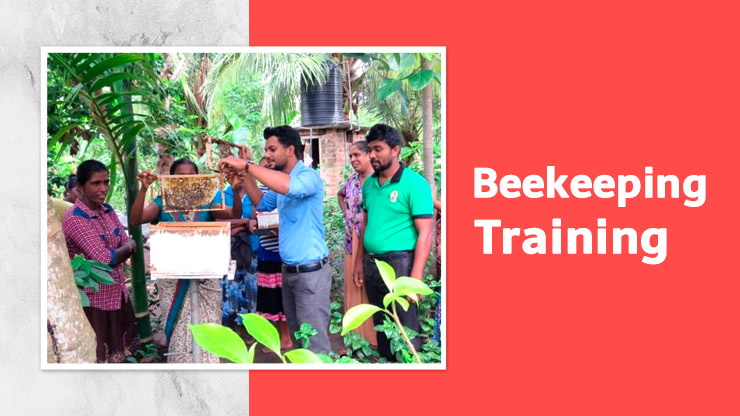
As we have already told, the farmer who starts bee cultivation needs technical knowledge and experience. Therefore, the farmer or entrepreneur should work with the farmers already doing beekeeping in that area for a few months. You can also take a certificate from a reputed training institute for this business.
The entrepreneur or farmer can contact his regional agriculture department or any agricultural university to train in this business as far as practice is necessary. However, an entrepreneur will get all this knowledge only when he gets a practical understanding of it after training from a local agriculture department or agricultural university.
2. Most suitable place for Bee Farming Business
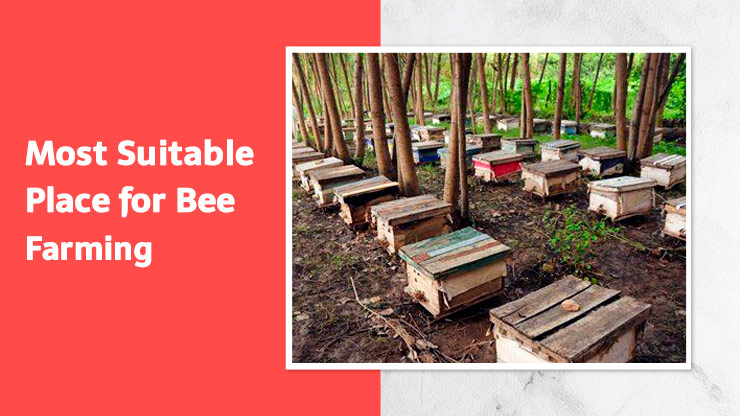
You should select the suitable place for starting a honey business plan that should be dry. High levels of moisture affect bee flying and honey ripening. It is necessary to have a natural or artificial source of water at the site. Trees act as wind belts in colder areas. The beehive can be set under the shade of trees, or artificial arrangements can be constructed to provide shade.
It is meant to say that if the entrepreneur selects a site for a beekeeping project where trees are abundant, he can keep the beehives under the trees in the shade. Plants that provide pollen and honey for bees are called floras or pastures. Therefore, such a site may suit Honey Beekeeping, where many plants produce pollen or honey.
3. Tools for Honey Bee Project
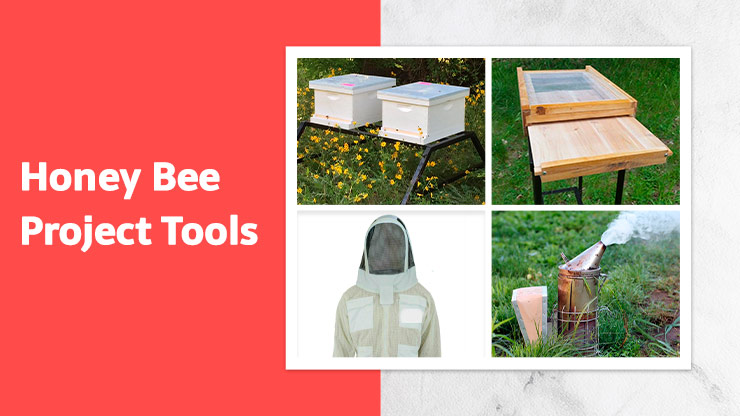
Different geographical conditions may require various equipment for Beekeeping in India. Therefore, which tools will prove suitable for the entrepreneur, the entrepreneur can find out from the local beekeepers, although some equipment list is as follows.
- Hive stand
- Bottom board
- Hive bodies
- Painting
- Smoker
- Hive tool
- Protective wear
- Frames and combs
- Queen excluder
- Inner cover
- Outer cover
- Plastic hive equipment
4. Manage Pollination Bee
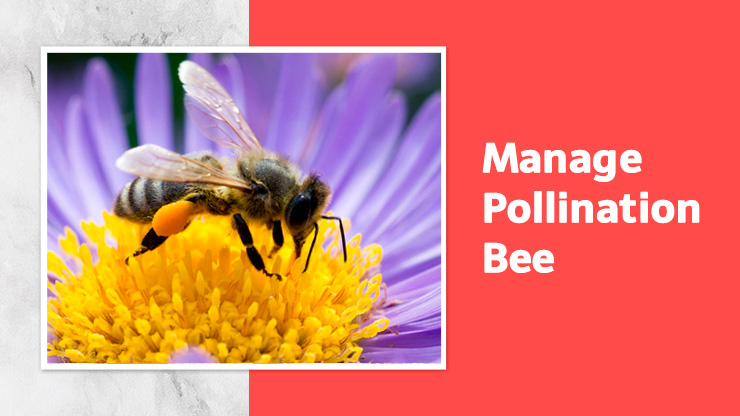
As we all know, bees make honey by taking pollen and juice from plants. Therefore, the farmer or entrepreneur needs to keep the beehives near such a field to come from the plants. Pollen and juice can be easily obtained. Consequently, it is advisable to establish a bee colony in areas with at least a 10% flower area.
A farmer or entrepreneur starting honey farming in India should also remember that three colonies can be held per hectare if the bee species is Italian. On the other hand, if the bee species is Indian, 5 colonies can be planted per hectare. In addition, many crops benefit significantly from bees’ pollination, and their list is as follows.
- Almonds, apples, apricots, peaches, strawberries, citrus, and lychees benefit from pollination among nuts and fruits.
- Vegetables include cauliflower, carrots, cabbage, cilantro, cucumber, cantaloupe, onions, pumpkin, radishes and turnips.
- The crops benefiting from the honey bee farming project in India are mustard, safflower, niger, rapeseeds, oilseed crops, sunflower, etc.
- Fodder seed crops like lucerne, clover and others are also included in this.
5. Keep Bees Free From Pests and Diseases
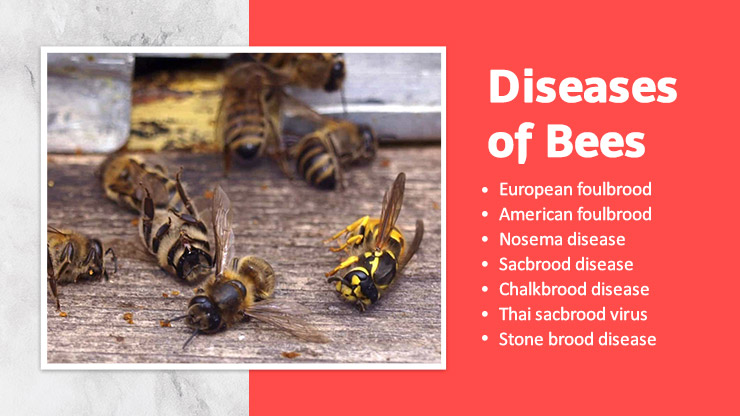
If the farmer or entrepreneur expects good profits from his honey bee farming business, he should protect his stock and the organisms producing the product. Therefore, the entrepreneur should try to keep them away from pests and diseases. Generally, wax moths, ants, wasps, wax beetles, birds, trachea mites, parasitic mites, Varroa destroyers, bee mites, brood mites etc., are common pests.
And as far as the diseases found in this farming are concerned, European foul-brood disease, American foulbrood, Nosema disease, Sacbrood disease (SBV), Chalkbrood disease, Thai sacbrood virus (TSBV)and Stone brood disease etc. Therefore, the farmer needs to take action in advance for the control of specific pests and diseases. That is, the farmer can contact the local agriculture department to resolve them.
6. Bee Harvesting in India
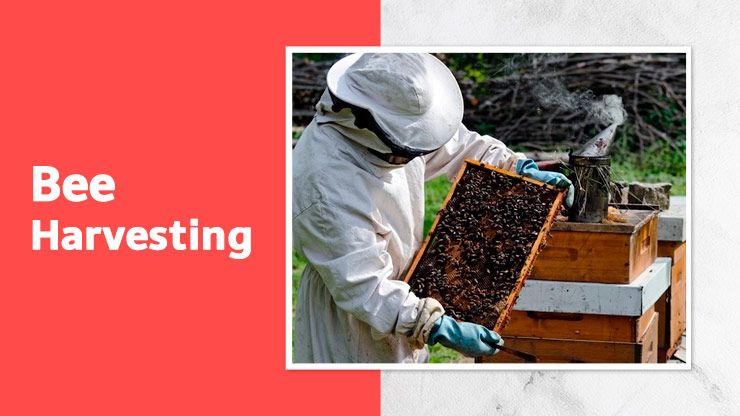
Honey, Bee Venom, Bee Wax, Royal Jelly, Propolis and Pollen are famous among the products presented by the honey beekeeping project. Harvesting products in old and top bar hives require the farmer to select a hive containing honey-coated with a thin layer of bee wax and is very close to the outer side of the nest. Honey is extracted from the Super hive part with the help of Honey Extractor Equipment.
Honey Bee Farming Project Report / Cost and Profit Analysis
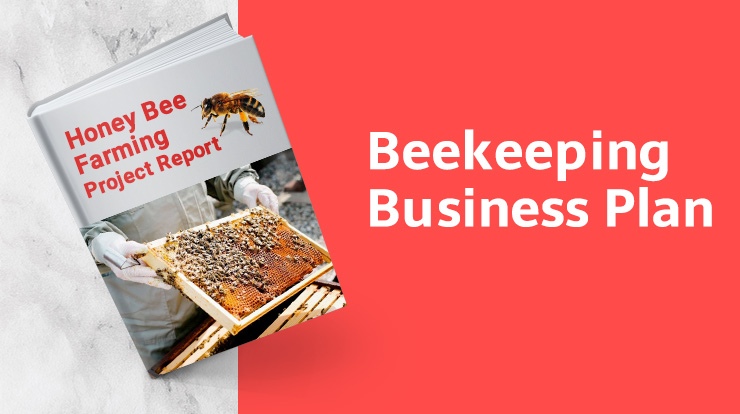
The cost report is made on 50 Bee colonies, and the estimated values have been shown here for reference. The values may vary depending on the location and availability of things. It is necessary to understand that there could be some extra expenses involved for land and maintenance, which have not Been included in this estimation but have to be required for practical implementation of the project.
Assumptions of Bee Projects
- No. of Beehives: 100
- Cost of comb base sheet: Rs 700/kg
- Sugar Price: 45/kg
- Cost of nucleus box: Rs 1200 (Cerana) and Rs 2000 (Mellifera)
- Cost of honey extractor: Rs 5000/ piece for Cerana and Rs 7000/piece for Mellifera
- Hive stand cost: Rs 300
- Labour cost per day: Rs 250
- Cost of a Mellifera Bee colony: Rs 3500
- Cost of a Cerana Bee colony: Rs 2500
Initial Capital Investment
| Material | Investment in Rs (Cerana) | Investment in Rs (Mellifera) |
| Cost of 100 Bee colonies | 2,50,000 | 3,50,000 |
| Cost of 50 nucleus box | 60,000 | 1,00,000 |
| Cost of the honey extractor | 5,000 | 7,000 |
| Cost of 100 Beehives | 1,00,000 | 2,00,000 |
| Cost of 600 ant wells | 12,000 | 12,000 |
| Cost of 150 feeder frames @ Rs 120/frame for Mellifera and Rs 100/ frame for Cerana | 15,000 | 18,000 |
| Cost of honey bee farming equipment (smoker, hive tool, swarm net, Bee veil, wire embedder, storage drums and other miscellaneous) | 10,000 | 16,000 |
| Cost of 150 hive stands | ||
| Cost of 200 Queen gates | 8,000 | – |
| Cost of 100 Queen Bee excluder sheet | – | 20,000 |
| Total cost | 4,60,000 | 7,23,000 |
Recurring Investment in Beekeeping Business Plan
| Material and labour | Investment in Rs (Cerana) | Investment in Rs (Mellifera) |
| Cost of comb foundation sheet | 5,600 | 42,000 |
| Cost of sugar for feeding @ 200 kg for Mellifera and 100 kg for Cerana | 9,000 | 18,000 |
| Charges for survival and pollination | 20,000 | 50,000 |
| Labour charges for 300 days | 1,50,000 | 1,50,000 |
| Total cost | 1,84,600 | 2,60,000 |
Production Details
- Honey produced from Cerana is 1000 kgs.
- Honey produced from Mellifera is 2500 kg.
- Cost of Honey bee box price / kg: Rs 200 (average)
- Wax produced from Cerana is 8 kg.
- Wax produced from Mellifera is 20 kg.
- Cost of Beeswax/kg: Rs 300 (average)
- 50 honey bee box for sale: Cerana: Rs 1,25,000 (Rs 2500 for per division) / Mellifera: Rs 1,75,000 (Rs 3500/division)
- The total Cerana honey bee farming income: Rs (2,00,000 + 2400 + 1,25,000) = Rs 3,27,400
- The total Mellifera honey bee farming income: Rs (5,00,000 + 6,000 + 1,75,000) = Rs 6,81,000
- The profit earned on working capital or recurring capital is:
- Cerana bee farming profits: Total Earning – Recurring Capital ( 3,27,400 – 1,84,600 = Rs 1,42,800)
- Mellifera bee farming profits: Total Earning – Recurring Capital ( 6,81,000 – 2,60,000 = Rs 4,21,000)
Loans and Subsidies for Beekeeping Business

The NBB (National Bee Board), in association with NABARD, has schemes for financing the Beekeepers in India and assists with women’s employment in these divisions. Therefore, it is recommend to visit the NBB website or the nearest office to get the nature and assistance provide for Bee Farming in India.
For more information regarding different types of farming, you can check our blog section. For
bee farming subsidies or other Government announcements, you can visit our news section. Along with this, you can download our Tractor Junction App to get regular updates.
FAQs of Project Report of Honey Bee Farming
Que. How can I apply for the beekeeping loan?
Ans. You have to prepare a project report then you can apply for the beekeeping loan.
Que. Is the beekeeping business profitable?
Ans. Yes, the beekeeping business is profitable.
Que. How long do honey bees make honey?
Ans. It takes 3-4 weeks for honey bees to produce honey from a new hive.
Que. How much land do you need for beekeeping?
Ans. The minimum size of land should be 6,000 square feet. One hive should be establish more than 10 feet from the second hive.
Que. How much does it cost to start a honey business?
Ans. Rs 4,60,000 (Approximate) Initial Capital Investment and Rs 1,84,600 (Approximate) Recurring Investment are need for the 100 beehives.
Related Blog
Goat Farming Project Report
Buffalo Farming Project Report
Sheep Farming Business


